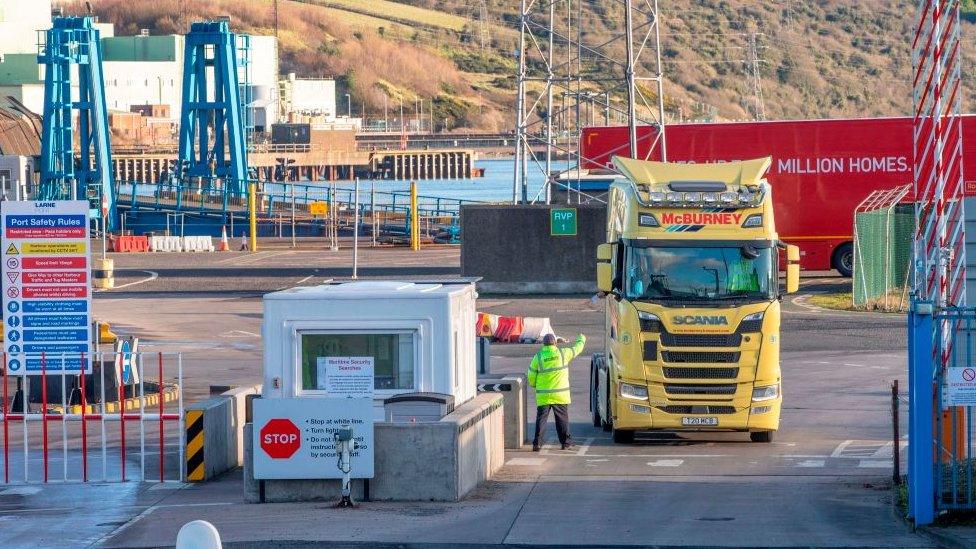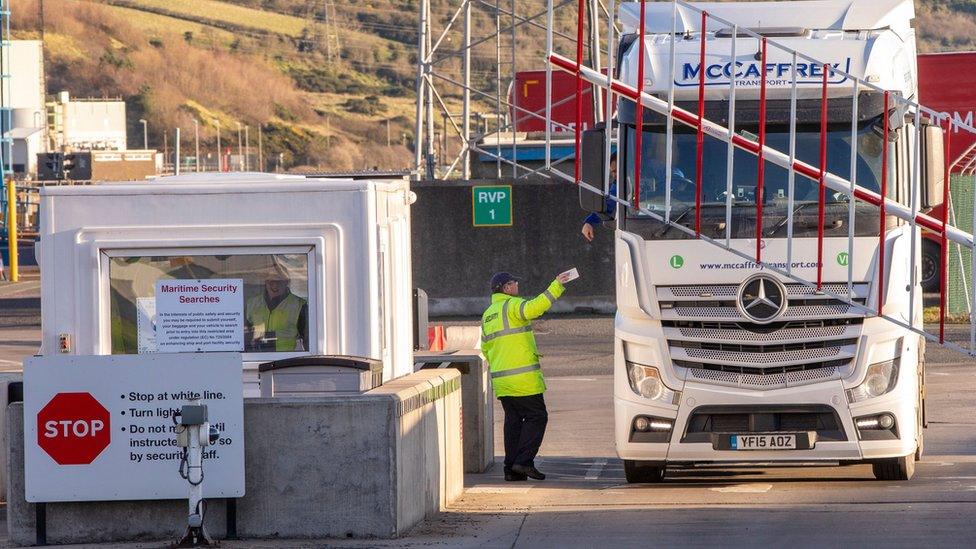Fall in freight passing through Northern Ireland ports
- Published
- comments

The amount of freight passing through Northern Ireland's ports fell back from record levels last year.
Official figures show total tonnage in 2022 was 27.9 million, down 5.3% from 29.5 million in 2021.
Across all UK ports total tonnage was up by 3% from 445.7 million to 458.9 million.
The use of car ferries continued a strong post-pandemic recovery with car ferry traffic through Northern Ireland ports at its highest since 2004.
Car ferry traffic was up by 9.5% to 583,000 vehicles; compared with the pre-Covid level in 2019 it represents an increase of nearly 25%.
The fall in freight traffic saw the total tonnage of inward goods decrease by 4.1% to 16.5 million tonnes while outward traffic decreased by 7.1% to 11.5 million tonnes.

In terms of freight vehicles, a total of 901,270 passed through Northern Ireland ports in 2022 - a decrease of 5% from 948,933 in 2021.
The majority of total port traffic came through Belfast (65.7%), while the Port of Larne accounted for the second highest level of total traffic (13.2%), followed by 11.6% through Warrenpoint.
The vast majority of freight (70%) was coming or going to rest of the UK while the other major partner destinations were the Netherlands and Belgium.
There was a big fall in trade with Russia and a big increase with Colombia which probably reflects Colombian coal being substituted for Russian coal.
Impact of Windsor Framework?
Scrutiny of Northern Ireland's trade data has become politicised in light of the Northern Ireland Protocol and its successor agreement, the Windsor Framework.
The framework is the post-Brexit trading arrangement which was agreed by the UK and EU this year.
It keeps Northern Ireland inside the EU's single market for goods, giving Northern Ireland manufacturers better access to the EU than companies in other parts of the UK.
But it also means there are some checks and controls on goods entering Northern Ireland from Great Britain, leading to added cost and complexity for importing businesses.
Supporters of the deal are looking for evidence that the arrangement has boosted, or at least protected trade, while opponents seek to show the opposite.
The first detailed data to be published after the protocol was implemented suggests that trade with both Great Britain and the Republic of Ireland had increased.
Related topics
- Published14 December 2022

- Published2 February 2024
